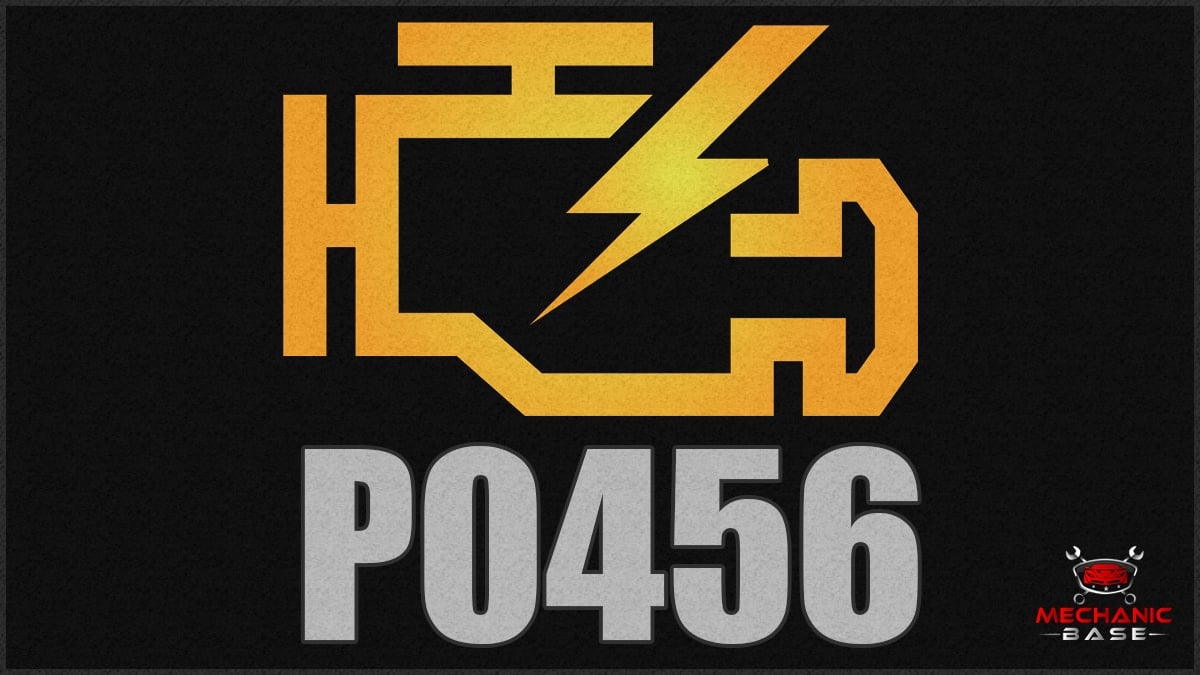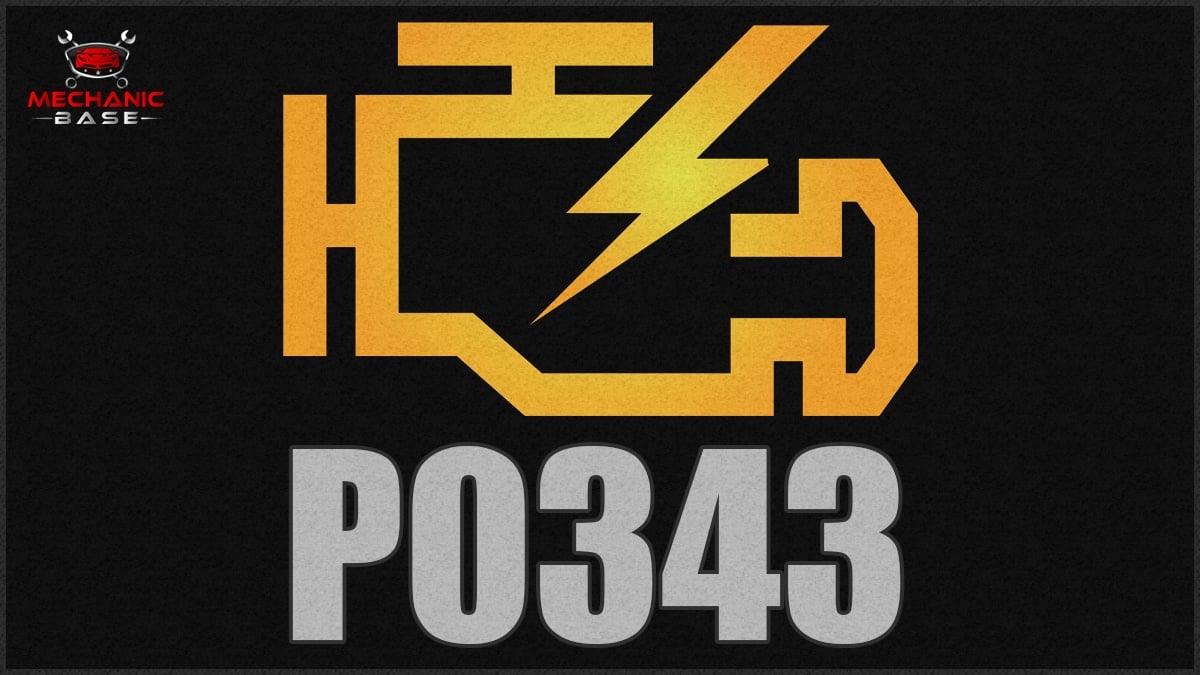When it comes time to troubleshoot the meaning of a DTC, it can be difficult to know what steps to take first. That’s especially true if you see the P0410 code and aren’t sure what it means or how to fix it.
In this guide, we give you the meaning and causes of the P0410 trouble code. We also look at the P0410 DTC to determine common symptoms, possible repairs and the diagnostic steps. At the end of our article, you’ll find some answers to your top questions and an average repair cost, so you can budget accordingly.
Code P0410 Definition
P0410 – Secondary Air Injection System Malfunction
What Does the P0410 Code Mean?
Code P0410 is set when the Engine Control Module (ECM) detects a malfunctioning Secondary Air Injection System. When this occurs, the oxygen sensor is unable to accurately determine the changes in the air levels coming from the exhaust with the air injection system running.
Basically, it’s triggered because the passive test on the air injection pump fails or provides inconclusive data to the ECM. The ECM further commands the air injection pump to perform an active test to determine the fault. If the oxygen sensor doesn’t output a higher reading within three seconds, the code sets.
What Are The Symptoms Of P0410?
In some cases, there are no noticeable symptoms. For that reason, it can be difficult to believe that there’s anything wrong with the vehicle at all.
Here are the most common P0410 symptoms.
- Check Engine Light
- Hesitation during acceleration
- Noise coming from the air injection pump
- Decreased fuel economy
- Trouble starting the engine
Even if there are no initial symptoms when the Check Engine Light comes on, they could start at any time. This becomes a dangerous situation if you are in the middle of a congested area, especially if you have trouble accelerating.
What Are The Causes of P0410?

Without running through our diagnostic steps, it would be difficult to discern where the fault is. However, these are the most common P0410 DTC causes.
- Failing secondary air pump or relay
- Defective air pump check valves
- Clogged air injection system
- Blown fuse
- Bad EGR Valve
- Malfunctioning oxygen sensor
- Blocked catalytic converter (usually sets other trouble codes with P0410)
How Serious is the P0410 Code?
Medium – If all you are dealing with is a Check Engine Light, this problem may not seem too severe. After all, you can still drive the car without any strange symptoms. However, there are some warnings to heed.
First, with the Check Engine Light on, it’s impossible to know if something else malfunctions that could be serious. Additionally, your vehicle could start exhibiting symptoms at any time. Furthermore, the car is pumping out more emissions than needed and will likely fail an emissions test during this time.
How Do I Fix the P0410 Code?
The list of possible P0410 repairs is extensive, which is why it’s important to run through some diagnostic checks first. You don’t want to replace unnecessary parts, wasting your time and money.
Here are some possibilities.
- Replace air pump or relay
- Replace air pump check valves
- Clean/replace hoses
- Replace fuse
- Replace EGR Valve
- Replace oxygen sensor
- Replace catalytic converter
Common P0410 Diagnosis Mistakes
Even as professional mechanics, we can forget to check for the proper amount of intake airflow at the pump before replacing any parts. It’s also important to check all of the connections, as wires may just be burnt or disconnected.
If you replace parts without knowing what’s wrong, you may not fix the problem. Instead, you will be throwing unnecessary money at the problem, hoping that something resolves it. You could save a lot of hassle by following all of the diagnostic procedures before attempting repairs, even if you know what’s wrong.
It’s also easy to overlook the possibility that it’s the EGR valve leaking, causing the same symptoms as a bad secondary air pump.
How to Diagnose the P0410 Trouble Code?
If you want to diagnose and repair the P0410 trouble code like a pro, we have the tips to get you started. Most of these tasks can be done by anyone without any special tools.
- Check the trouble codes with your compatible scanner. If other codes are present, use our online DTC library to decipher the information.
- Check the automotive fuse for the air injection pump. If the fuse is blown, you need to replace it with one that has the same amperage rating. If the system continues to blow a fuse, it’s because there’s an electrical short or overload occurring somewhere.
- Inspect any electrical connections to see if there are damaged or disconnected wires. Replace anything that looks damaged.
- Clean out the hoses and check the one-way valve to see if it’s clogged. You may need to replace the valve.
- Inspect the air injection pump. Test the relay according to the instructions in the service manual. If the relay passes, you may need to replace the pump.
- Test the oxygen sensor according to the instructions in the service manual.
- Check the EGR valve to ensure it’s opening and closing as it should.
If these steps don’t get you any closer to finding out what’s wrong, it’s time to contact a mechanic. There could be a more serious issue that requires specialized tools or expertise.
How Much Does It Cost To Fix Code P0410?
After your diagnosis, you will be able to determine what part or parts need to be replaced. We’ve included some estimated repair costs, assuming that you need to pay for the parts and labor. If you can fix the vehicle yourself, your repair cost should be lower.
- Replace air pump or relay – $125 to $650
- Replace air pump check valves – $300 to $600
- Clean/replace hoses – $75 to $550
- Replace fuse – $15 to $60
- Replace oxygen sensor – $135 to $600
- Replace catalytic converter – $850 to $1,700
- Replace EGR Valve – $200 to $1000
A Mechanic’s Tips About The P0410 Code
The Secondary Air Injection System (SAIS) makes up part of the vehicle’s exhaust system. It was first introduced back in the 1960s, so it is included in most modern vehicles. The goal of the system is to reduce the carbon monoxide and hydrocarbon emissions coming from the vehicle.
The SAIS injects oxygen-filled ambient air into the exhaust manifold after the valves. This process takes about thirty to ninety seconds, allowing the engine to get up to normal operating temperature. Once this occurs, the SAIS shuts down.
With the P0410 trouble code, you may notice several others that also have to do with the Secondary Air Injection System (SAIS). Here are some to watch for.
- P0411 – Secondary Air Injection System Incorrect Flow Detected
- P0412 – Secondary Air Injection System Switching Valve A Circuit Malfunction
- P0413 – Secondary Air Injection System A Open
- P0414 – Secondary Air Injection System A Shorted
- P0415 – Secondary Air Injection System Switching Valve B Circuit Malfunction
- P0416 – Secondary Air Injection System Switching Valve B Circuit Open
- P0417 – Secondary Air Injection System B Shorted
- P0418 – Secondary Air Injection System Relay A Malfunction
- P0419 – Secondary Air Injection System Relay B Circuit Malfunction
Is code P0410 serious?
It can be serious, depending on the symptoms you are experiencing. With the Check Engine Light on and no symptoms, you may not think it’s important to fix the problem quickly, but that’s not a good idea. Very quickly, problems can occur and you are also allowing more emissions into the environment than necessary.
Can I drive with a P0410 code?
If there are no other symptoms occurring with the P0410 code, you may be able to continue driving. However, while the Check Engine Light is on, you won’t know when something else goes wrong. Additionally, the car will fail emissions testing while this problem exists, so you should have it fixed.
How do you fix a secondary air injection system malfunction?
It depends on what your diagnosis shows. There could simply be a loose connection, defective wire or blown fuse that needs to be fixed. Otherwise, you may need to replace the air pump, the relay, the check valve, a hose, the oxygen sensor or the catalytic converter, in rare cases.
Can I drive with a bad secondary air injection pump?
You shouldn’t drive with any Check Engine Light on even if there aren’t symptoms of a problem. With the MIL on the dashboard, you won’t know if something more severe crops up. Additionally, troublesome symptoms could begin at any time, which is dangerous if you are in the middle of heavy traffic.
What are the symptoms of a bad secondary air injection pump?
In some cases, there can be no symptoms at all except for the Check Engine Light. Yet, most people notice some hesitation during acceleration and occasional trouble starting the engine. It can also lead to decreased fuel economy and a noise coming from the air injection pump.
Prompt attention to the P0410 code can help you avoid other problems down the road. While it may not seem serious, it’s important to take action whenever the Check Engine Light comes on. With this code, in particular, you want to get the problem fixed, so you can do your part to protect the environment.
Additionally, when the car starts acting up and exhibiting symptoms, driving will become more burdensome. Walk through our steps and repair the problem for a warning-free ride.
Categories: OBD Codes

















